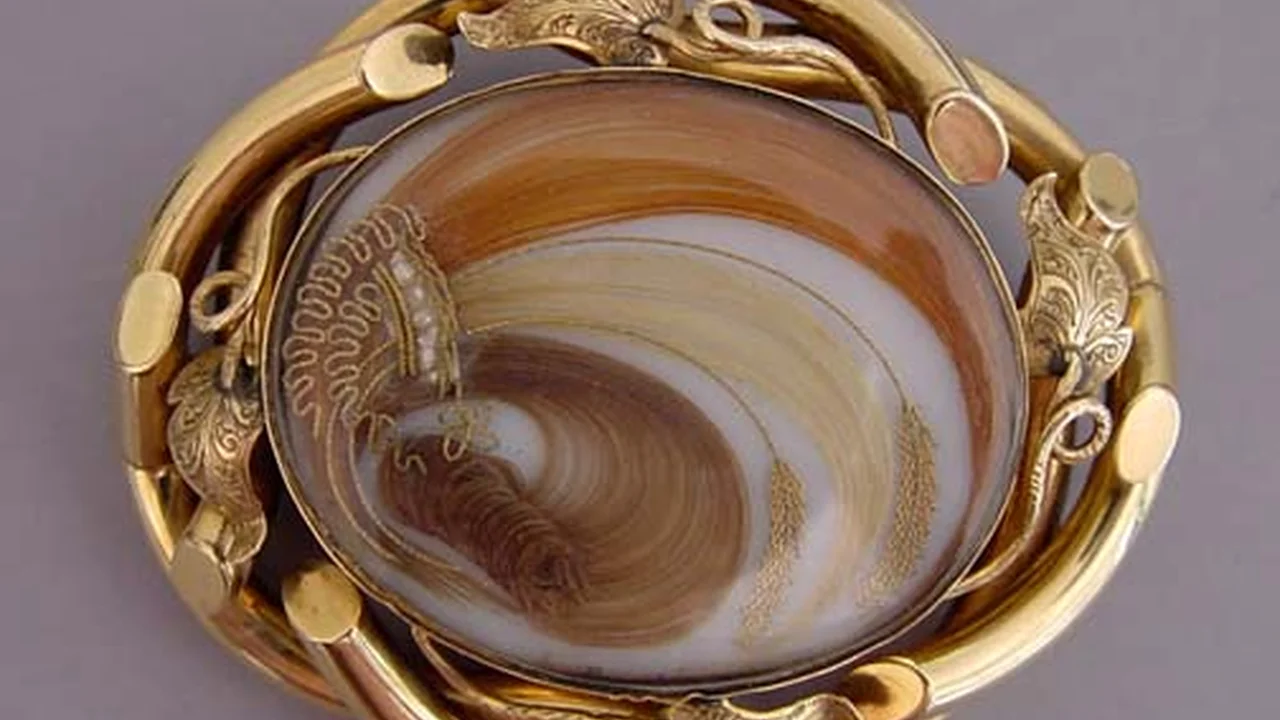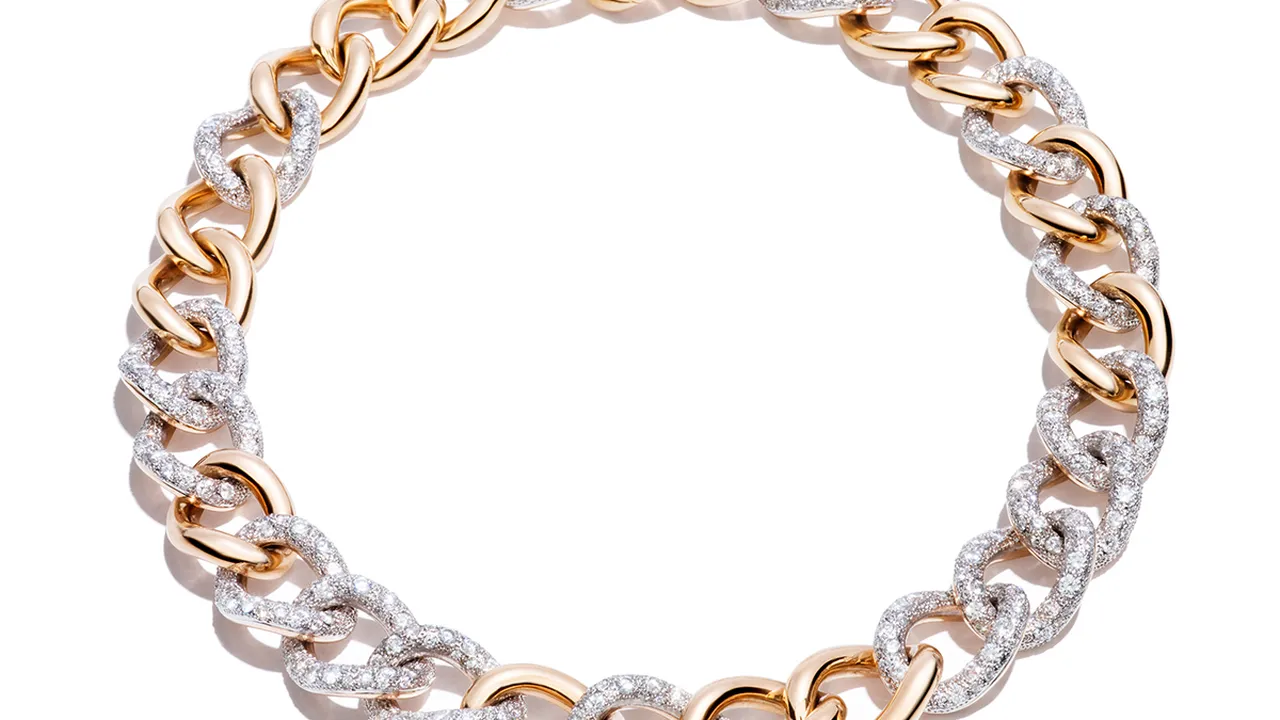Pearls in Estate Jewelry A Timeless Classic
Pearls in Estate Jewelry A Timeless Classic

The Enduring Appeal of Estate Pearl Jewelry
Estate pearl jewelry… it's just got that *something*, right? That timeless elegance that makes you feel like you've stepped back into a bygone era. We're not talking about your grandma's string of dime-a-dozen pearls (although those are sentimental, for sure!). We're talking about pieces with history, character, and a story to tell. This guide will walk you through everything you need to know about pearls in estate jewelry, from different types and origins to how to care for them and appreciate their inherent beauty.
Understanding Different Types of Pearls Found in Estate Jewelry
Okay, so pearls aren't *just* pearls. There's a whole world of variety out there! In estate jewelry, you're most likely to encounter these types:
- Natural Pearls: These are the holy grail! Formed naturally in oysters without human intervention. Finding a strand of perfectly matched natural pearls in estate jewelry? Jackpot! They're incredibly rare and valuable. How to spot them? They often have slight imperfections and irregular shapes.
- Cultured Pearls: The most common type you'll find. These are formed in oysters with a little help from humans – a tiny irritant is inserted to start the pearl-making process. They're still real pearls, just more readily available. Akoya, Tahitian, and South Sea pearls are all types of cultured pearls.
- Akoya Pearls: Classic, round, and white. These are what most people picture when they think of pearls. Often found in necklaces and earrings. Origin: Japan and China.
- Tahitian Pearls: Exotic and dark! These pearls range in color from grey and black to green and purple. Origin: French Polynesia.
- South Sea Pearls: Large, lustrous, and luxurious. These are the biggest and most valuable of the cultured pearls. Origin: Australia, Indonesia, and the Philippines.
- Freshwater Pearls: More affordable and come in a wider variety of shapes and colors. Origin: China.
- Seed Pearls: Tiny, delicate pearls often used in Victorian jewelry. They're sewn onto fabric or strung together to create intricate designs.
Origins of Estate Pearls Tracing Their History
Knowing where a pearl *came* from can tell you a lot about its value and its history. Here's a quick rundown:
- The Persian Gulf: Historically, this was *the* place for natural pearls. Pearls from this region are highly prized.
- Ceylon (Sri Lanka): Another historical source of high-quality natural pearls.
- Japan: Pioneers in cultured pearl production, especially Akoya pearls.
- French Polynesia: Home to the stunning Tahitian pearls.
- Australia, Indonesia, Philippines: The source of those gorgeous South Sea pearls.
- China: A major producer of freshwater pearls and increasingly, high-quality Akoya pearls as well.
Caring for Pearls in Estate Jewelry Preserving Their Luster
Pearls are delicate, so treat them with love! Here's how to keep them looking their best:
- Avoid Harsh Chemicals: Perfume, hairspray, and even some lotions can damage pearls. Put your jewelry on *after* you've applied these products.
- Wipe Them Down: After wearing, gently wipe your pearls with a soft, damp cloth.
- Store Them Properly: Don't toss them in a jewelry box with other pieces! Store them in a soft pouch or lined jewelry box to prevent scratches.
- Restring Regularly: If your pearl necklace is strung on silk thread, have it restrung every few years to prevent breakage.
- Avoid Ultrasonic Cleaners: These can damage pearls.
- Don't Submerge in Water: Prolonged exposure to water can weaken the silk thread and damage the pearl's nacre.
Identifying Genuine Pearls in Estate Jewelry What to Look For
How do you know if those pearls are the real deal? Here are a few things to look for:
- The Tooth Test: Gently rub the pearl against your front teeth. A real pearl will feel slightly gritty, while an imitation pearl will feel smooth.
- The Luster: Real pearls have a deep, iridescent luster that imitation pearls can't replicate.
- The Shape: Natural pearls are rarely perfectly round. Slight imperfections are a good sign.
- The Weight: Real pearls are heavier than plastic imitations.
- The Price: If the price seems too good to be true, it probably is.
- Get an Appraisal: If you're unsure, have the piece appraised by a qualified gemologist.
Estate Pearl Jewelry Style Guide Styling Tips and Trends
Pearls are incredibly versatile. Here are some ideas on how to style them:
- Classic Strand: A timeless choice for any occasion. Dress it up with a little black dress or dress it down with jeans and a t-shirt.
- Pearl Earrings: Simple pearl studs are always elegant. For a more dramatic look, try pearl drop earrings.
- Pearl Brooch: Add a touch of vintage charm to a blazer or dress with a pearl brooch.
- Layered Pearls: Mix and match different lengths and types of pearl necklaces for a modern, bohemian look.
- Pearls with Denim: Pearls and denim? Absolutely! It's a chic and unexpected combination.
- Consider the Occasion: A simple strand of pearls is perfect for a formal event, while a pearl pendant is great for everyday wear.
Product Recommendations Specific Estate Pearl Jewelry Pieces and Their Details
Alright, let's get down to specifics! Here are a few examples of estate pearl jewelry pieces you might find, along with details and estimated prices (prices can vary greatly depending on condition, provenance, and the specific seller):
- Vintage Akoya Pearl Necklace with Diamond Clasp:
- Description: A classic strand of Akoya pearls, approximately 7mm in size, with a white gold clasp set with small diamonds. Likely from the 1950s or 60s.
- Use Case: Perfect for weddings, formal events, or adding a touch of elegance to a business outfit.
- Comparison: Akoya pearls offer a bright luster and are a great starting point for a pearl collection. Compared to freshwater pearls, they are generally more round and have a higher sheen. Compared to South Sea pearls, they are smaller and more affordable.
- Estimated Price: $500 - $1500 (depending on pearl quality and clasp)
- Art Deco Tahitian Pearl and Diamond Pendant:
- Description: A dramatic pendant featuring a large Tahitian pearl (12mm+) with a diamond halo set in platinum. Likely from the 1920s or 30s.
- Use Case: A statement piece for evening wear or special occasions. Pairs well with dark colors.
- Comparison: Tahitian pearls are known for their unique dark colors. Compared to Akoya pearls, they are larger and more exotic. Compared to South Sea pearls, they can be more affordable, depending on the specific pearl.
- Estimated Price: $2000 - $8000 (depending on pearl size and diamond quality)
- Victorian Seed Pearl Brooch:
- Description: An intricate brooch made of tiny seed pearls sewn onto fabric or metal. Often features floral or geometric designs. Likely from the late 1800s.
- Use Case: Adds a touch of vintage charm to a jacket, dress, or scarf. A conversation starter!
- Comparison: Seed pearl jewelry is delicate and often very detailed. Compared to larger pearl pieces, it's more subtle and understated. Its value lies more in the craftsmanship and historical significance than the size of the pearls themselves.
- Estimated Price: $200 - $1000 (depending on condition and design)
- Estate South Sea Pearl Earrings:
- Description: Classic and elegant stud earrings featuring two large South Sea pearls.
- Use Case: These earrings add sophistication to any outfit, perfect for both casual and formal occasions.
- Comparison: South Sea pearls are the largest and most valuable of the cultured pearls. Compared to freshwater pearls, they are significantly larger and have a higher luster. Compared to Akoya pearls, they are also larger and have a more luxurious feel.
- Estimated Price: $1,000 - $5,000 (depending on pearl size and quality)
- Antique Pearl and Diamond Ring:
- Description: A beautiful ring featuring a central pearl surrounded by diamonds, set in a vintage design.
- Use Case: A statement ring that can be worn daily or for special events.
- Comparison: The value of this ring depends on the quality of both the pearl and the diamonds, as well as the design and craftsmanship. Compared to a plain pearl ring, the diamonds add extra sparkle and value.
- Estimated Price: $800 - $3,000 (depending on the quality of the pearl and diamonds)
Price Considerations Factors Affecting the Value of Estate Pearl Jewelry
So, what makes one pearl piece worth $500 and another worth $5,000? Several factors come into play:
- Pearl Type: Natural pearls are the most valuable, followed by South Sea, Tahitian, Akoya, and then freshwater pearls.
- Pearl Size: Larger pearls are generally more valuable.
- Pearl Shape: Round pearls are typically more desirable (and valuable), but some baroque pearls (irregularly shaped) can also be highly prized.
- Pearl Luster: The brighter and more iridescent the luster, the more valuable the pearl.
- Pearl Surface Quality: Blemishes and imperfections will lower the value.
- Matching: In strands of pearls, the more closely matched the pearls are in size, shape, color, and luster, the more valuable the strand.
- Metal and Gemstone Setting: The type of metal (gold, platinum, silver) and any accompanying gemstones (diamonds, sapphires, etc.) will also affect the price.
- Age and Provenance: A piece with a known history or a signature from a famous designer will be worth more.
- Condition: Well-preserved pieces will command higher prices.
Where to Find Estate Pearl Jewelry Tips for Buying and Selling
Ready to start your own estate pearl jewelry collection? Here's where to look:
- Antique Stores: A great place to find unique and one-of-a-kind pieces.
- Estate Sales: You might get lucky and find a hidden gem at a bargain price.
- Online Auction Sites: Be careful and do your research before bidding. Check the seller's feedback and ask questions.
- Reputable Online Jewelry Dealers: Look for dealers with a good reputation and a return policy.
- Jewelry Shows: A chance to see a wide variety of pieces in person.
- Consignment Shops: Another option for finding gently used estate jewelry.
And if you're *selling* estate pearl jewelry:
- Get an Appraisal: Know the value of your piece before you sell it.
- Research Your Options: Compare offers from different buyers.
- Consider Consignment: You might get a higher price selling on consignment, but you'll have to wait longer to get paid.
- Be Honest About Condition: Disclose any flaws or damage.
So there you have it! A deep dive into the world of pearls in estate jewelry. Happy hunting!
:max_bytes(150000):strip_icc()/277019-baked-pork-chops-with-cream-of-mushroom-soup-DDMFS-beauty-4x3-BG-7505-5762b731cf30447d9cbbbbbf387beafa.jpg)






